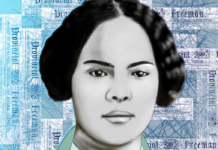A new study by the Tennessee Education Research Alliance highlights an issue with retaining teachers of color in the state. The report notes that not only are teachers of color underrepresented in comparison to the student body, but that teacher turnover for Black educators is much higher than their white counterparts. The study suggests schools should do more to hire and support teachers of color.
But, there has to be more to this conversation and practice than just “hiring individuals that look like students…”
As I continue to wrestle with these statistics and the notion of hiring individuals to increase diversity among staff, I think we are missing the bigger picture and the opportunity to craft how exactly our vision of equity and our mission center around diversity, equity, and inclusion.
Most recently, I’ve centered my work and studies around the work of equity and what that looks like in a school setting/learning environment. Here are the three strands that shape my thinking:
- Equity in terms of access for all learners, ensuring learners have what they need to be successful and display academic growth
- Equity in terms of content that’s social-justice centered and focused; and
- Equity in terms of adequate representation of students (i.e.: hiring practices, culturally sensitive curriculum, inclusivity practices, student voice, and choice, etc.)
When I think about the educational settings in which I’ve worked, I keep returning to a few questions: How much do we level the playing field? How do we ensure resources are adequately distributed? How do we know/address the varying academic and social needs of students to help guide their success? These are all questions that require more than just some thought but strategic ways of application and figuring out what works best.
I wonder how much of equity is relational? It is obvious that time and trust goes into ensuring relationships are worthwhile and one can assume that in the learning environment, relationship building is extremely critical and necessary in hopes of being an effective practitioner. At least that’s what I believe. So, with the cultivating of those relationships come the realization of what students need. Equity is not seen as some unfamiliar phenomenon, but rather an obvious and organic occurrence that takes place as a result of a continual relational build. Maybe? Maybe not? This is what I’m currently wrestling with.
In Memphis, the population of students was always a majority of Black students, and we often didn’t feel it necessary or adequately equipped to even have such conversations around race, equity, diversity and in some cases, competencies. There was no preparation for making such a commitment as an educator and no gauge to measure our own racial consciousness.
Now we must ask ourselves, what exactly is our motivation behind placing more teachers of color in classrooms. I believe there is more to it than just the simple hiring of teachers. We should be ensuring spaces are created that are supportive of all teachers and that best practices that suit the needs of learners are utilized. These are the conversations that should be being held in a broader scope. Why is turnover so high in some places? I would argue the support pieces are not in place. We have not formalized what it looks like to fully support teachers holistically beyond curriculum implementation and standards teaching. I shared my thoughts in a recent blog post published by Ed Week and I’ll share similar sentiments here:
With these initiatives, the data is still startling. What about this system doesn’t appeal to teachers of color? I actually can answer that question by sharing my own perspective and truth. I made a personal and later public vow (after I resigned from teaching) that I would never (willingly) be a part of the problem. I wouldn’t lie to students via final grades reflecting their allegedly learned skills and competencies, and then pass them on. For students that couldn’t read, I wouldn’t simply excuse it. I would move beyond calling it out and help that student learn to do what others sometimes seem to brush easily past.
I will not look into the eyes of innocent faces and not try my best to properly equip them for futures that await them. So for this particular teacher of color, no amount of money and/or incentive could ever get me back into a classroom to pass on those lies and inequitable practices that I had to witness daily, and I still sadly observe and witness in schools across this country.











Mr. Anderson
@Mizter_A
·
16h
“I am located in the margin. I make a definite distinction between that marginality which is imposed by oppressive structures and that marginality one chooses as site of resistance – as location of radical openness and possibility.” bell-hooks #truth #themargins